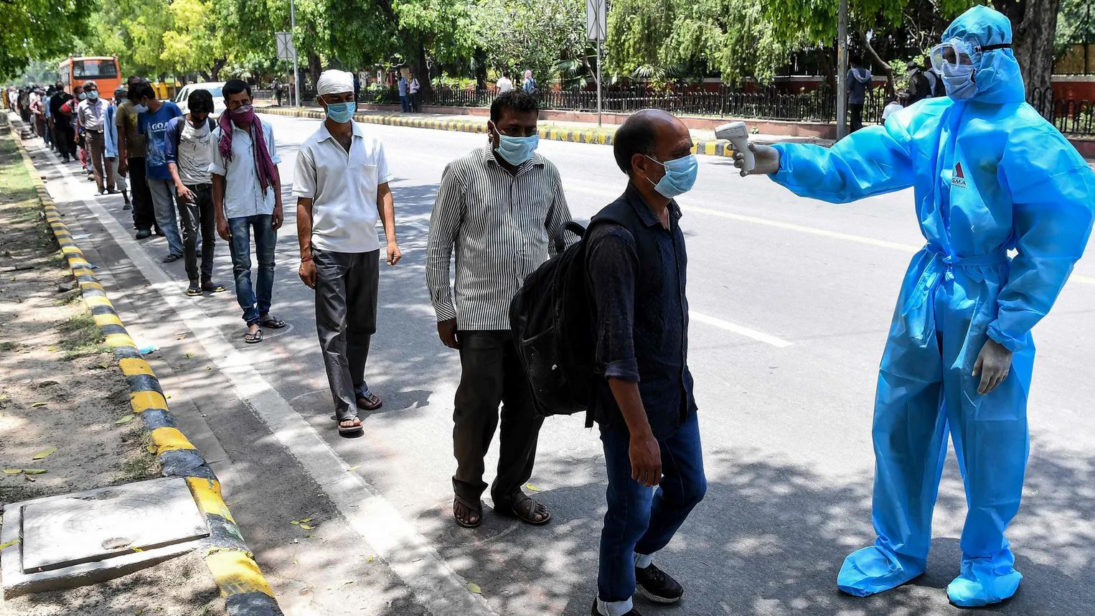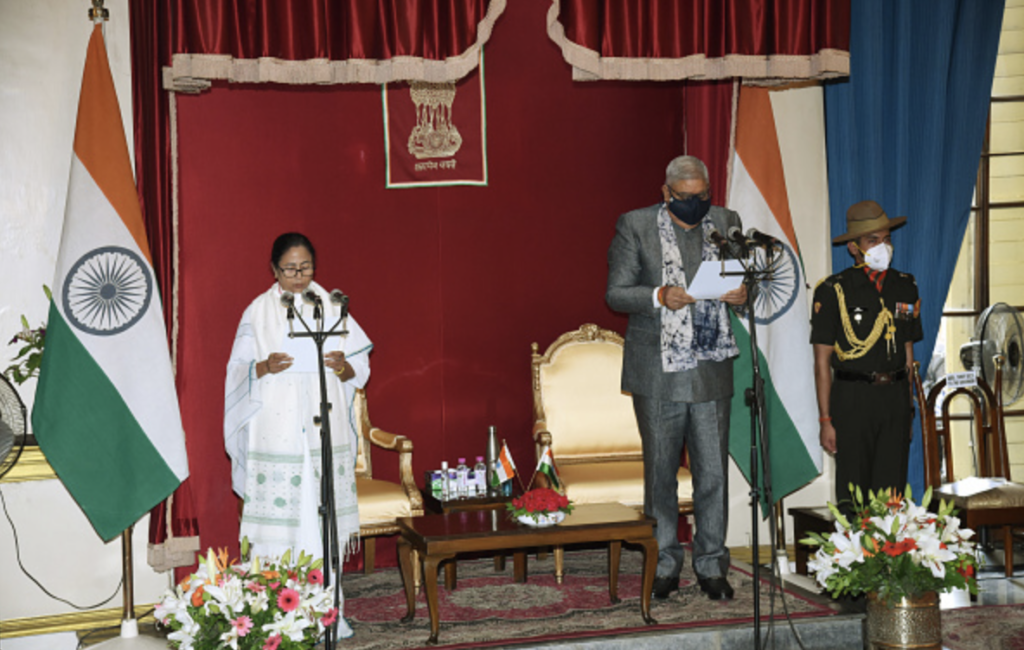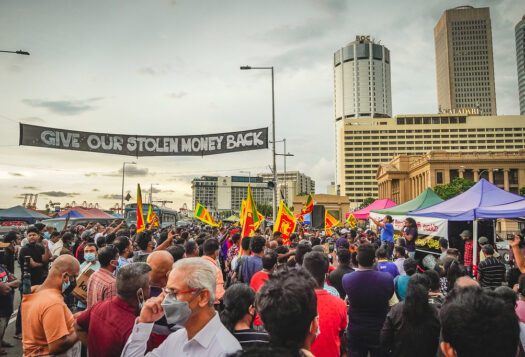
India is being ravaged by a second COVID-19 wave with approximately 350,000 infections and 4,000 deaths reported every day. Narendra Modi government’s mal-administration, complacency, and callousness in combating COVID-19 have raised concerns about Modi’s political future, especially regarding his potential to succeed in the 2024 national elections. A humbling defeat in the recent elections in West Bengal has added fuel to the fire regarding Modi’s potential to lose.
The loss in West Bengal and the COVID-19 disaster have both tarnished “Brand Modi”—the image of a strong, efficient, credible, and able administrator who both fights and works for the masses and is able to deliver on his promises—and raised doubt regarding Modi’s appeal, his capacity to connect with the masses, and his ability to win elections in 2024. However, despite the twin setbacks, Modi remains a formidable opponent and it would be misguided to write him off in the 2024 national elections. Four trends underlie this. First, there is no opposition leader who can match Modi’s persona, mass connect, and national appeal. Second, Modi has three years to repair his image. Third, state elections are fought on local issues and do not reflect the national sentiment. Finally, a lack of a unified opposition will not pose a big challenge to Modi and the BJP.
The loss in West Bengal and the COVID-19 disaster have both tarnished “Brand Modi”—the image of a strong, efficient, credible, and able administrator who both fights and works for the masses and is able to deliver on his promises—and raised doubt regarding Modi’s appeal, his capacity to connect with the masses, and his ability to win elections in 2024.
Modi and COVID-19 Catastrophe
The COVID-19 catastrophe has severely tarnished “Brand Modi,” particularly in the government’s failure to acknowledge the impending second wave despite warnings and its complacency and incompetence in tackling the surge in infections, which has led to thousands of deaths. Conducting elections in four states and one union territory has exacerbated the spread of the disease in these states. Modi himself addressed rallies without masks in West Bengal and other states, highlighting this callousness. His focus on gaining power in Bengal rather than tackling COVID-19 has damaged his image as a selfless leader whose political interest is equivalent to national interests and who believes in fighting and working for the masses. After Modi allowed millions to congregate for the “Kumbh Mela,” and declared victory in the fight against COVID-19, his image as a credible and efficient administrator has taken a hit.
The renovation of Delhi’s Central Vista as an “essential service” also highlights his apathy and lack of touch with the masses. The Central Vista project envisions the construction of a new residence for the Prime Minister, a new Parliament, a common central secretariat, and a Vice Presidential enclave by December 2022 at a cost of USD $2.8 billion. The money could have been spent to both vaccinate Indians and judiciously to ramp up health infrastructure such as field hospitals, ICU beds, oxygen, and other medical equipment.
Delays in distribution of foreign aid to combat COVID-19 again highlighted Modi government’s poor administration and governance. Although aid from the United States, the United Kingdom, and other countries—amounting to more than 300 tons of medical equipment, including 3,200 oxygen cylinders, 5,500 oxygen concentrators, 930,000 masks and 136,000 Remdesivir injections—reached New Delhi, they were left lying in the airport hangars and only distributed after one week.
Modi and the Electoral Debacle in West Bengal
In the recent state elections in West Bengal, the BJP was desperate for victory and was instead routed. The BJP was eager to win in West Bengal both because it has never governed the state and to pay homage to its ideologue Shyama Prasad Mookerjee, who established the Bharatiya Jan Sangh, the BJP’s predecessor party. Winning would also have been the first time the BJP was able to defeat a regional party in the elections and take a step towards the party’s ambition of strengthening its foothold in Eastern India. Bengal’s culture and libertarian philosophy, which implies individual and cultural freedom as well as inter-faith assimilation, also poses a challenge to the BJP’s right-wing, conservative ideology. For example, Bengalis are unwilling to accept the BJP’s Romeo squads, which have wreaked havoc in the state of Uttar Pradesh with regard to inter-faith marriage and assimilation.

The BJP prematurely proclaimed that it would win more than 200 seats, form the government, and bring about “asol poriborton [true change].” It was optimistic because in the 2019 parliamentary elections, it won 18 out of the 42 seats, primarily due to Modi’s influence. In 2019, “Brand Modi” was one of the primary reasons for the BJP’s surge in the state. Modi was able to overcome the BJP’s organizational deficiencies and absence of a local leader to challenge Mamata Banerjee. However, in the 2021 state elections, the BJP only won 77 out of 292 seats; the numerous rallies Modi held failed to translate into winning seats in the state election. While some argue that Modi’s speeches lacked concern, sincerity, and rhythmic consistency on issues, others assert that Modi addressing Banerjee as “Didi-o-Didi” alienated voters, especially women voters.
Modi’s inability to charm voters in the recent Bengal election has raised doubts regarding his ability to connect with the masses, his charisma, his appeal, and his oratory skills. Some analysts have questioned Modi’s efficacy and his national appeal in the 2024 national elections, while others assert that “Brand Modi” has not only lost its sheen but that the Prime Minister now seems vulnerable, and may be on his way out in 2024. Others have hailed Mamata Banerjee’s victory as an “epic story of a determined woman,” and asserted that Banerjee, a gritty street fighter, could be the new face of a united opposition and possibly defeat Modi led BJP in 2024.
Modi Still a Force to Be Reckoned With
There is no denying that the loss in West Bengal and the COVID-19 disaster have tainted “Brand Modi.” If the COVID-19 catastrophe has raised questions regarding Modi’s mode of governance, then the defeat in the West Bengal elections has generated questions regarding the Modi’s ability to win future elections. However, assertions of Modi’s political demise are exaggerated. Modi is still a formidable political opponent for the parliamentary elections in 2024 despite the fact that the COVID-19 mismanagement has created some challenges for his re-election in 2024.
However, assertions of Modi’s political demise are exaggerated. Modi is still a formidable political opponent for the parliamentary elections in 2024 despite the fact that the COVID-19 mismanagement has created some challenges for his re-election in 2024.
Modi enjoys a larger-than-life persona and strongman image in India. He maintains a mass connection with India’s populace, which is unlikely to wane quickly. In the October/November 2020 Bihar state elections, amidst the first wave of COVID-19, Modi addressed 12 rallies in Bihar. People voted for Modi, most of the candidates endorsed by him won in the elections, the BJP improved its tally to 74 seats with 19.46 percent vote share, and it formed the government with its ally, the Janata Dal (United). He presented his strong man image and his government’s success in meeting national security challenges. Modi’s connection with the people, his oratory skills, and the fact that people believe that he can deliver also influenced voters.
Modi also has three years before the 2024 parliamentary elections, which is enough time to repair his dented image. If the Modi government is able to stem the loss of life from the second wave and efficiently handle an imminent third COVID-19 wave, then Modi will likely be able to redeem himself in the eyes of the masses, claim credit, capture the narrative, and restore his image.
It is also premature to conclude Modi’s demise on the basis of state elections in West Bengal. The dynamics of national and state elections are different. State elections are fought and won on the basis of local issues. There is no political leader across India’s political spectrum who can match Modi’s national appeal, charisma, oratory skills, and connection to the masses. The 2014 and 2019 national elections were presidential style elections, referenda on Modi, rather than his party. 2024 is unlikely to be different with Modi still at the helm of the BJP.
A unified opposition or “third front” against the BJP (or in the past, against the Congress-I) has been difficult for parties to conceive of and implement. They face two principal challenges. First, it has been and will continue to be difficult for various political parties and regional leaders to reach a consensus on the opposition’s leadership. In the past, the “third front” and the subsequent coalition governments unraveled over issues of leadership. There will also be a collision between the conception of a “third front” and Congress-I’s ambitions of being the principal opposition party. To mount a concerted challenge to the BJP (and Modi), the regional parties first need to make a compromise and reach an understanding among themselves regarding the leadership issue. Second, Congress-I and regional parties must come to an understanding and select a leader of the unified opposition to challenge Modi and the BJP.
Conclusion
Critics have deemed the Modi government, in its failure to tackle the COVID-19 pandemic, a government “missing in action.” Yet the BJP’s West Bengal loss is not a bellwether for “brand Modi” in the 2024 general election. The COVID-19 pandemic is the biggest challenge Modi has faced in his last seven years as Prime Minister. If the Modi administration manages to curtail the damage from the second COVID-19 wave and successfully mitigate a third wave, Modi will be in a formidable position for the 2024 national elections. If COVID-19 continues to ravage India, the 2022 elections in the BJP governed state of Uttar Pradesh will be a litmus test for “Brand Modi.”
***
Image 1: Gwydion M. Williams via Flickr
Image 2: NurPhoto via Getty Images


